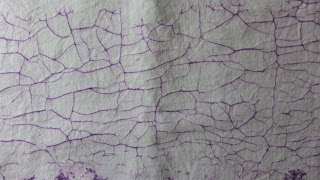Unfortunately, I didn't get the SWTAFE work up to speed, so didn't do the extra posts. And I have been busy - and out of touch in terms of the internet - during the workshop week.
I must say, one of the reasons I go to the Fibre Forum is that there is no radio, no tv (that I can actually hear) and there are no newspapers. And no-one talks about the world outside. So it is a wonderful retreat and I try not to sully it with the internet. (I did do a little, I have to admit. It allowed me to meet up with people from one of my online groups - I missed the official meeting because I lost track of what day it was but I knew they were there and could ask around.)
The classes are always interesting and I really enjoy the week away for reasons other than a retreat from the news of the world. The workshops offer lots of learning and there are many people there from whom you can gain added inspiration.
I did a workshop with Julie Ryder on resist dyeing using Procion dyes. We did some resist dyeing using clamping and shibori, to revise our knowledge of the dyeing process. Another technique I was introduced to was paste resists. Julie made up some starch based pastes and people experimented with them. There were potato, wheat and rice based mixtures. We also did some resist dyeing using Manutex, with and without dyes included, to add to the fabric we had dyed or to new fabric. We could use stencils, stamps or just brush on this mixture.
 |
| Clamping, tie dyeing, peg and fold resist. |
 |
| A potato based resist was painted on and left overnight to dry. It does not dry at an even pace and so it cracks. In the morning we painted the dye over the paste and it seeped through the cracks. |
We went on to chemical resist dyeing using two chemicals that interact with each other in such a way that you can put down a coloured background that won't influence the second colour you put on - provided you do it properly. I did make a couple of mistakes but, as Julie said, we learn from our mistakes. This last technique was amazing - you can put yellow over a blue background and you will end up with a blue background and yellow design, no green in sight.
 |
| These pieces had the remazol base, waiting to dry. Notice that you can do an intense background and then paint over it. |
 |
| If you look closely, you can see a halo around the pink lines, where the chemical has pushed the base colour away. And the yellow spots are much lighter than the background, which went on first. |


No comments:
Post a Comment